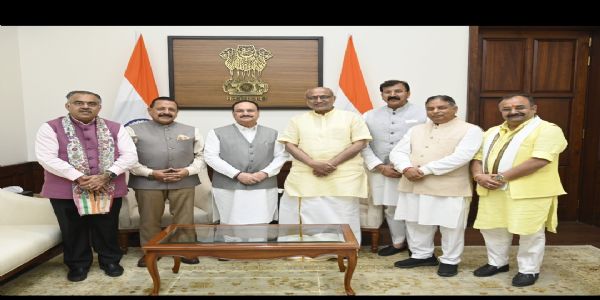
Patna, 6 November (H.S.): The first phase of the Bihar Assembly elections commenced at 7 AM on Thursday, with an air of enthusiasm marking the democratic festival. As voters in 18 districts decide the fate of 1314 candidates across 121 seats, the stakes are exceptionally high, with the prestige of several veteran leaders on the line. Women, youth, and elderly citizens have begun to participate actively in the polling process.
A Test of Nitish Kumar's Stronghold
This phase is crucial for Chief Minister Nitish Kumar, leader of the Janata Dal (United). Voters in his traditional strongholds, including the districts of Nalanda, Nawada, Gaya, and Sheikhpura, are delivering their verdict today. The public is effectively grading the Nitish government's performance on key issues like its Saat Nischay (Seven Resolves) scheme, as well as developments in electricity, water, and road infrastructure.
In a pre-poll appeal, Nitish urged voters not to halt the momentum of development and to accelerate the pace of progress Bihar has achieved.
Tejashwi Yadav's Focus on Youth and Jobs
For opposition leader Tejashwi Yadav, this phase is equally decisive. Heavy polling is underway in his core area of Raghopur and its surrounding districts. Throughout his campaign, Tejashwi has centered his platform on unemployment, inflation, and government jobs, asserting that this time, the public will vote for jobs, not for caste.
It remains to be seen how much trust the youth will place in him and whether the Rashtriya Janata Dal (RJD) can retain its traditional vote bank.
BJP's Organizational Strength on Trial
For the Bharatiya Janata Party (BJP), this phase represents a significant test of its organizational strength. Union Home Minister Amit Shah is closely monitoring the seats in Bhojpur, Darbhanga, Muzaffarpur, and Sitamarhi, where the party performed impressively in the 2020 elections.
During his rallies, Shah declared that Bihar now talks about the nation, not caste. The impact of this slogan on voters will become clear on counting day.
Hopes of Congress and Left Parties
In the first phase, the Congress and Left parties have concentrated their efforts on the Seemanchal and South Bihar regions. Minority and backward-class voters are considered decisive in constituencies like Katihar, Araria, Kishanganj, and Purnia.
Congress leader Rahul Gandhi focused his campaign on issues of equality, justice, and inflation, though his statements also drew criticism from the opposition.
New Faces and Local Issues
Several new candidates are also in the fray, drawing attention to local issues. Questions raised by youth, women, and farmers have given a new direction to the political discourse this year, and some established leaders are facing local anti-incumbency.
Security and Voter Turnout
Over 65,000 security personnel have been deployed to ensure a smooth polling process. Sensitive booths are under surveillance with CCTV cameras and drones.
According to the Election Commission, voter turnout is expected to increase by the afternoon as more people from rural areas head to the polling stations, where the slogan first vote, then breakfast resonates with enthusiastic voters.
A female voter in Patna remarked, We are tired of hearing promises every time; this time, we will vote for someone who will work.
A Decisive Phase for Bihar's Future
According to political analyst and senior journalist Lav Kumar Mishra, the voting in this first phase will determine the direction of Bihar's political future. If Nitish Kumar manages to save his strongholds, the path for the NDA will be easier, he says.
If Tejashwi Yadav succeeds in attracting the youth, the RJD will gain new strength. Meanwhile, the BJP aims to repeat its 2020 performance.
This phase is not just about the fate of 1314 candidates but is the ultimate test of the credibility of political parties and the strength of their leaders' bastions.
---------------
Hindusthan Samachar / Jun Sarkar








